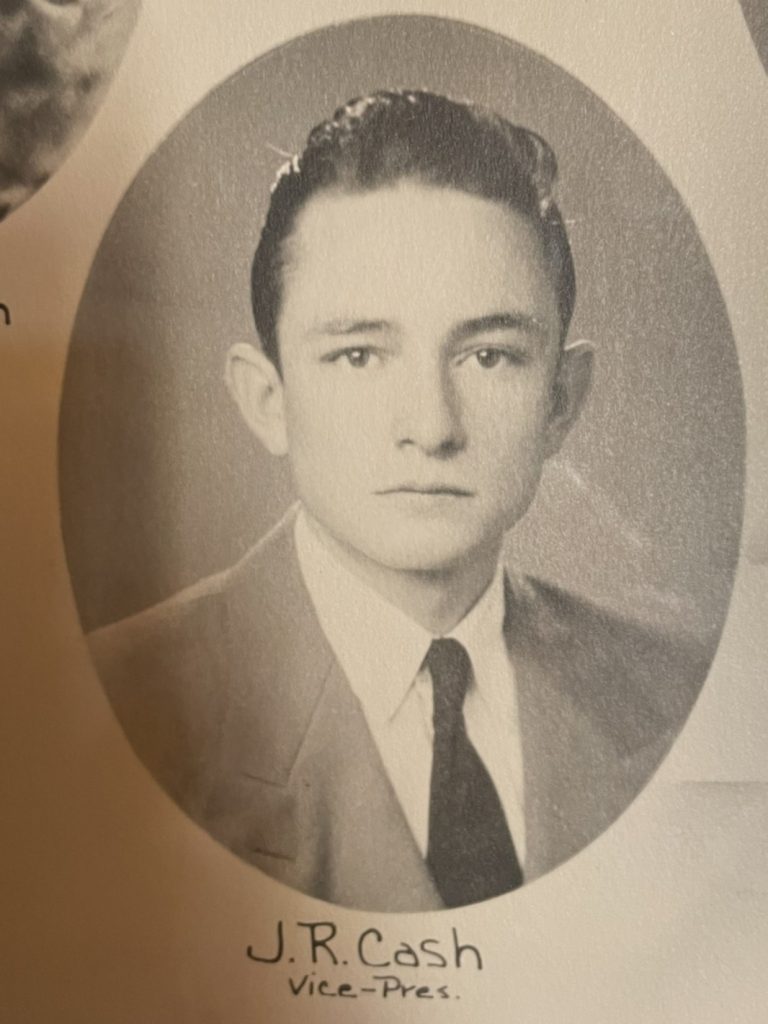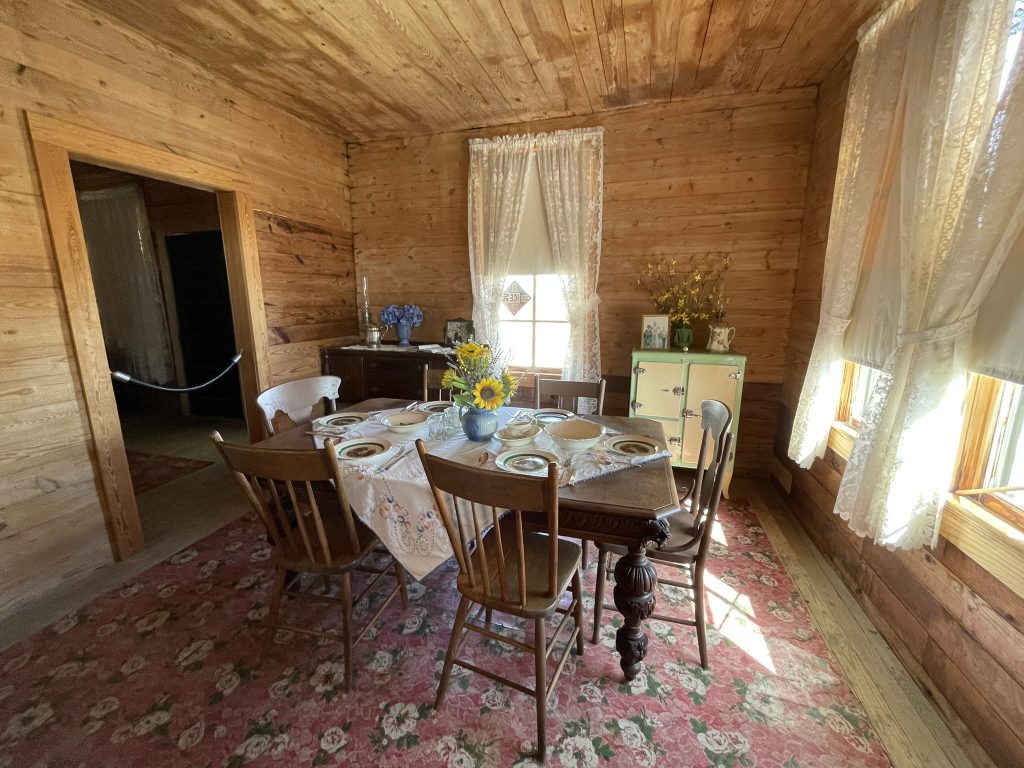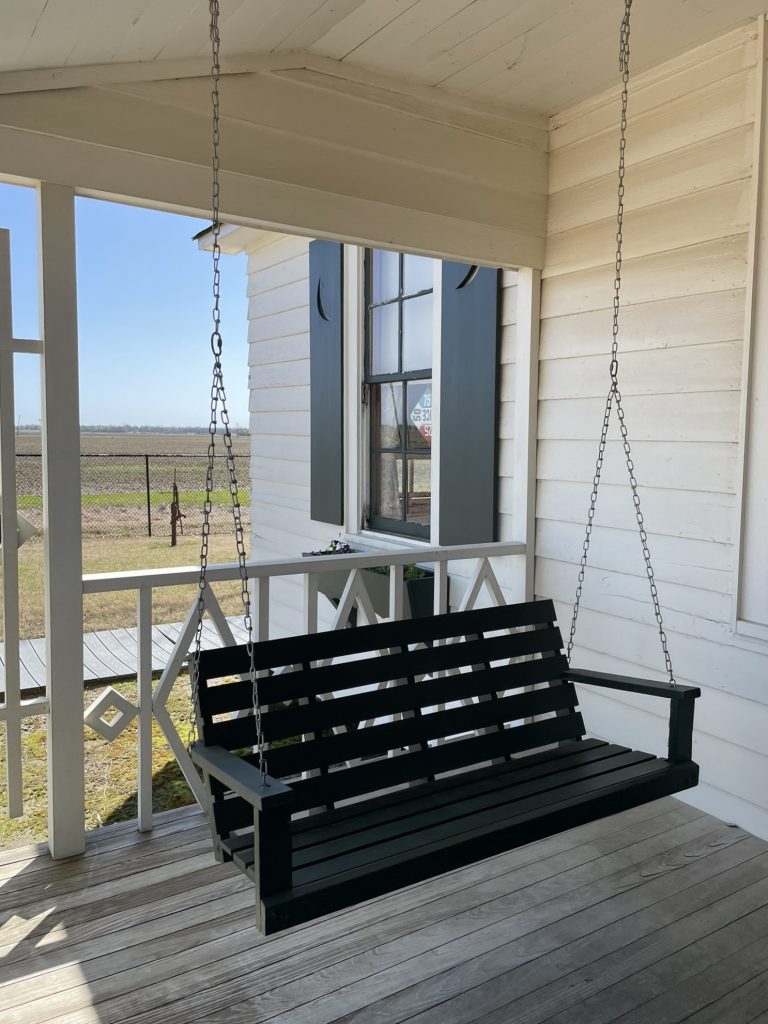Though neither of us is especially a Johnny Cash fan, we know a musical icon when we hear one. We crossed over the Mississippi River from Memphis, driving up just the Northeast corner of Arkansas to visit this and another site before crossing back to Tennessee, checking off a new state in the van in the process.
Cash’s boyhood home is in Dyess, Arkansas, and there’s a story to the town. The town came into being in 1934 as part of a New Deal government project to help boost the economy during the Great Depression.
Those interested in a homestead had to fill out a lengthy application, and the Cashes were one of the 500 applicants that were accepted out of many thousands that applied. Dyess was one of 100 such communities around the United States.


Selected families were given a small house and 20 acres to farm cotton. First, though, they had to clear the land themselves, which was no easy task. It could take 30 days to clear just one acre! The families were each also expected to have a kitchen garden, along with raising 40-60 chickens and at least one brood sow and one dairy cow.
By the early 1940s, it had become clear that 20 acres of cotton was not enough to sustain a family and a “consolidation program” took place. 179 homes were razed, allowing remaining families such as the Cashes to acquire an additional 20 acres. The Cash family remained on their farm until 1954.
Cash’s family moved into the home when he was just three years old in 1935, and he lived there until 1950 when he graduated high school. Cash was actually named J.R. on his birth certificate, and that’s how he was known in town. It wasn’t until he joined the Army and they demanded a first name and not initials that he became known as Johnny.
With just five rooms (including just two bedrooms), it seems like a small space for seven kids and two parents to live in. The family farm was flooded at least twice, which was the inspiration for Cash’s song Five Feet High and Rising.
The Cash home is one of the very few left standing from the original Dyess colony. After the Cash family moved out, the house had something like seven different owners, and was saved from demolition since it was widely known as the “Cash house.” It wasn’t restored until after Cash’s death, but one of his brothers and one sister did help with the reconstruction of the interiors of the home.


In addition to touring the home, we watched a very good film in the Visitor Center and saw some small exhibits on the Dyess community and a young J.R.
Doug and I listened to Johnny Cash by Robert Hilburn (affiliate link) while driving, and it was really interesting to hear about his growing up with the sites fresh in our minds. Doug’s already seen the well-regarded Walk the Line movie, and I’ve added it to my ever-growing “must watch” list.







